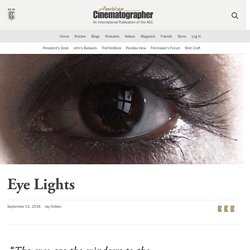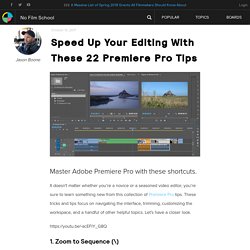

Cinematography. Photography Cheet Sheet: The Color Temperature Scale Explained. All you need to know about color temperature and its relationship with white balance summarized in one handy cheat sheet.

White balance is one of the crucial elements you have to work with to ensure accurate colors in your photos. To be able to do this, you have to know how to use the color temperature scale. Whether you’re just discovering color temperature in photography or looking for a better understanding of it, we’re sure this infographic by Digital Camera World will serve as a quick reference for you. In their how-to article for Tech Radar, Digital Camera World simply explained color temperature as the individual color produced by a light source. This varies from red to blue. The infographic above shows the color temperature scale and where the most commonly used white balance settings lie within it.
Choosing the right white balance setting for the scene you’re shooting will ensure accurate colors in your photos. Related Learn White Balance Basics to Achieve Accurate Colors.
15 Amazing Photographs That Successfully Tell a Story. Eye Lights - The American Society of Cinematographers. “The eyes are the windows to the soul.”

The eyes are also where we most often look when we watch an actor’s performance, and where we find the truth in their portrayal. Blog : Shot Craft : The American Society of Cinematographers. What is Missing from Photography. Ask Yourself These 5 Questions To Improve Your Photography. How to Control Contrast So You Always Get Amazing Landscape Photographs. Here's Why You Shouldn't Worry about Resolution According to DP Geoff Boyle. Who reigns supreme in the battle between picture and pixels?

It's difficult to define what makes an image "good". Epic Guide to FiLMiC Pro Eases Camera App Mastery - Mobile Moviemaking. May 22, 2018Roberta Suid Visited 56 times , 21 Visits today The iPhone’s built-in camera app works for casual shooting, but it offers limited control of important issues such as exposure, focus, white balance, and frame rate.

That’s why experienced mobile moviemakers prefer to shoot with a third-party app. Of these, the most popular by far is FiLMiC Pro ($14.99). You've Got to See How a Professional Cinematographer Lights a Simple Scene. Here's Every Type of LEE Diffusion Explained. This video helps demonstrate the subtle differences in LEE diffusion materials.

Lee Filters became the standard filter company in British television in the 1970's and are now fairly ubiquitous in the film industry. White diffusions like 216 (full white) and 251 (quarter white) are very common, but are only the beginning to the rabbit hole of materials. Don McVey and Kieron Jansch test each piece of diffusion in front of an 800w HMI and a 2K Tungsten light source. Of course, LEE isn't the only company making professional grade diffusion. Speed Up Your Editing With These 22 Premiere Pro Tips. Master Adobe Premiere Pro with these shortcuts.

An Intro to Color Theory: How to combine colors and set the mood of your designs. Sony Creates Groundbreaking Backlit CMOS Sensor with Global Shutter. Sony just announced a groundbreaking development in the world of camera image sensors: it has created a 1.46-megapixel back-illuminated CMOS sensor that has global shutter.

This is the first-ever CMOS sensor of over 1MP that has both back-illumination and global shutter. Backside illumination (BSI) is an image sensor design that uses its arrangement of imaging elements to increase the amount of light that’s captured, leading to improved low-light performance. While this type of design was previously used for things like astro cameras and security cameras, it has become a prominent technology in consumer still photography cameras.
In 2015, Sony’s a7R II became the world’s first back-illuminated 35mm full frame camera. Last year, Nikon’s D850 became the first 45+ megapixel BSI sensor. Sony’s newly developed sensor is a BSI sensor that has a global shutter function, allowing every single pixel in the frame to be captured at exactly the same time. (via Sony via DPReview) Meet The Gaffer #82: Quick Car Mount. How to Shoot Great Looking Low Light iPhone Video. Shooting quality low light iPhone footage is not only possible, it can actually work well.

Here are some tips for achieving some great results. Cinematographers Apply Old Tools With New Tech. Judging by this year’s awards-worthy entrants in the cinematography category, the format wars have been settled, and the winner is “all of the above.”

SEE MORE: Awards: The ContendersSEE MORE: Standalone Movies with a legitimate shot at trophies originated on everything from Super 16 film to Ultra Panavision 70, an anamorphic film gauge last used in 1966. Cinematographers have always chosen format and lenses according to the opportunities offered by the story and the demands of the shoot. But today’s proliferation of digital formats, combined with the adaptation of lenses old and new, gives d.p.s an unprecedented range of options. Is there a digital look as a new aesthetic value emerging? Quality in the artistic field or: Technical achievements and their aesthetic consequencesLecture by Rolf Coulanges BVK, translated by Herman Verschuur.at CINEC 2014 / Cine Congress „Creativity in the digital era", Munich 2014 Is there a digital look as a new aesthetic value emerging?

I ask myself this question, what recording technique I want to use when I prepare for a new film given thechallenges I am facing in this project. I will restrict myself in this lecture to the question of recordingtechniques. For Postproduction which is by now a full part of the image control I will need anotherlecture.Everybody asks himself the question what is the scientific-technical concept for the best reproduction of ascene or an image. Everything You Need to Know (& Even Some Stuff You Don't) About Camera Lenses. Many pros will tell you: it's less about the camera you're shooting on and more about the lens. I mean -- that's neither here nor there, but one thing's clear: knowing all you can about lenses, how they're built, their properties, and even their history, will benefit you immensely as a filmmaker.
This is something Filmmaker IQ's John P. Hess obviously knows, seeing as he has dedicated two separate videos to diving into the history and mechanics of the camera lens. It's 45 minutes well spent, so check out both videos below: 5 Different Meanings You Can Evoke with Framing. "Framing an image is defining its meaning. " This is the concept at the center of Chloe Galibert-Laîné's excellent video essay that examines the way directors of films released in 2015 have chosen to frame their images.
Oscar-winning ‘Revenant’ Cinematographer Talks Bear Mauling, Digital. Cinematographer Emmanuel Lubezki has won two Oscars in a row, for “Gravity” and “Birdman,” and he could be in line to win a record-breaking third for “The Revenant.” Here's Every Type of LEE Diffusion Explained. This video helps demonstrate the subtle differences in LEE diffusion materials. Lee Filters became the standard filter company in British television in the 1970's and are now fairly ubiquitous in the film industry. White diffusions like 216 (full white) and 251 (quarter white) are very common, but are only the beginning to the rabbit hole of materials.
Cinematographer Roundtable: Cons of CG, Betraying Oliver Stone and When to Quit a Film. This story first appeared in a special awards season issue of The Hollywood Reporter magazine. A Picture To Show You Clearly The Effects of Aperture, Shutter Speed and ISO On Images. A Brief History of Camera Movement.
In the Beginning… 3 Practical Tips for Using Scopes Now. Grading Insights From Patrick Inhofer. Top image: Sun Belt Express via IMDb. Oscar-winning ‘Revenant’ Cinematographer Talks Bear Mauling, Digital. 5 Tools That Will Help You Move Your Camera More Cinematically. 5 Different Meanings You Can Evoke with Framing. When cinematography is more than camerawork - The 5C Project. A Clear Look at the Issue of Resolution - The American Society of Cinematographers.
Steve Yedlin, ASC offers an intriguing demonstration on how capture formats, pixel counts and postproduction techniques affect image quality and why simply counting Ks is not a solution when selecting a camera. Left or Right? Why a Character's Lateral Movement On-Screen Matters in Film. Want to Be a Steadicam Operator? Start With These 5 Tips. 5 Horror Films You Should Study to Learn Cinematography. Blood and guts aren't the only things that make horror films so terrifying. 5 Horror Films You Should Study to Learn Cinematography. Telling Stories with Composition: What Are Your Frames Saying to Your Audience? A Clear Look at the Issue of Resolution - The American Society of Cinematographers. Cinematography - Accueil. What’s the Value of a Photograph? – ERIC KIM.